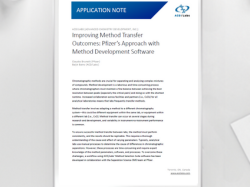Study shows greatest cost linked to people with depression, COPD, coronary artery disease and dementia
Posted: 5 December 2014 |
Even in food-abundant industrialized countries like the U.S., an alarming number of people, particularly seniors, are in a state of diseased-associated malnutrition…
Even in food-abundant industrialized countries like the U.S., an alarming number of people, particularly seniors, are in a state of diseased-associated malnutrition1. Because of the impact on patient health, disease-associated malnutrition imposes a significant economic burden on society of $157 billion per year, according to new research published in a supplemental issue of the Journal of Parenteral and Enteral Nutrition (JPEN) and supported by Abbott2.
Researchers looked at malnutrition across eight specific diseases* and evaluated the direct medical costs, the years of quality life lost** and mortality to determine the total economic burden. The cost was calculated using existing literature3 and estimates from the National Health Interview Survey (NHIS), the National Health and Nutrition Examination Survey (NHANES) and the Center for Disease Control and Prevention (CDC).
When looking across the eight diseases, researchers found that:
- More than 80 percent of the total cost came from cases of depression, chronic obstructive pulmonary disease (COPD), coronary heart disease and dementia.
- Patients with COPD, depression and dementia had the highest rates of malnutrition at 11 percent, 10.4 percent and 7.9 percent, respectively.
- On a per patient basis, colorectal cancer, coronary heart disease and stroke patients experience the highest economic burden, despite these conditions accounting for a small proportion of the overall burden.
Disease-associated malnutrition affects about 10 percent of chronically ill patients in the public4 and between 30 and 50 percent of patients admitted to hospitals5,6. When malnutrition goes undiagnosed, particularly in seniors, it can lead to increases in health complications, hospital readmissions rates and overall health care costs7.
While older patients represented only a small subset of the population studied (13 percent), the research found that nearly 33 percent of the total economic burden ($51.3 billion) from malnutrition came from people 65 and older.
“Particularly among older people, malnutrition can often go under the radar because the focus is on treating their primary condition,” said Robert H. Miller, Ph.D., Divisional Vice President, R&D, Scientific and Medical Affairs, at Abbott Nutrition. “With new research showing the burden that malnutrition has on our community and our health care systems, doctors, hospitals and caregivers should factor in the importance of nutrition and nutritional screenings to help improve health outcomes for people at risk for malnutrition.”
Importance of Screening for Malnutrition
Despite its prevalence, about 60 percent of patients are never screened for malnutrition risk, according to one study8. Malnutrition can be treated if the patient is screened and offered nutritional support when they are at risk. Expert groups, such as the Alliance to Advance Patient Nutrition, are focused on encouraging more hospitals and health care providers to integrate nutrition screenings to assess patient risk in the hospital.
To learn more about what groups like the Alliance are doing to improve nutritional screenings in the hospital, visit www.malnutrition.com.
Additional information on the study, including authors and affiliation, can be found here: http://pen.sagepub.com.
References
- Pereira G, et al. Annal. Emerg. Medicine. 2014.
- Snider, J. et al., J Parenter and Ent Nutr. 2014; published online 23 September 2014. DOI: 10.1177/0148607114550000
- Hirth RA, Chernew ME, Miller E, Fendrick AM, Weissert WG. Willingness to Pay for a Quality-adjusted Life Year In Search of a Standard. Medical Decision Making.
2000;20(3):332-342. - Stratton RJ, et al. Disease-Related Malnutrition: An Evidence-Based Approach to Treatment. Cambridge, MA: CABI Publishing; 2003.
- Robinson MK, et al. Improving nutritional screening of hospitalized patients: the role of prealbumin. JPEN J Parenter Enteral Nutr. 2003;27(6):389-395.
- Somanchi M, et al. The facilitated early enteral and dietary management effectiveness trial in hospitalized patients with malnutrition. JPEN J Parenter Enteral Nutr. 2011;35 (2): 209-216.
- Norman K et al. Clin Nutr. 2008; 27: 5-15.
- Meijers JM, et al. Nutrition. 2009;25:5 12-519.









